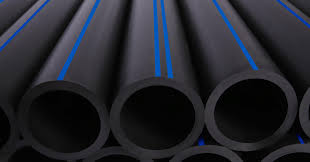Oct . 10, 2024 07:46 Back to list
ppr pipes factory
The Evolution and Importance of PPR Pipes in Modern Construction
In the construction and plumbing industry, the selection of materials plays a crucial role in ensuring the longevity and efficiency of water distribution systems. Among the various materials available, PPR (Polypropylene Random Copolymer) pipes have emerged as a formidable choice for both residential and industrial applications. This article will delve into the characteristics, advantages, manufacturing process, and applications of PPR pipes, highlighting why they have become a staple in modern construction.
Understanding PPR Pipes
PPR pipes are made from polypropylene, a thermoplastic polymer that is known for its durability and resistance to heat and chemicals. The “random copolymer” term refers to the structure of the polypropylene, which influences its performance under various conditions. One of the key benefits of PPR pipes is their ability to handle hot and cold water, making them suitable for a wide range of plumbing systems.
Manufacturing Process of PPR Pipes
The production of PPR pipes involves several stages that ensure high quality and performance. The process begins with the selection of raw materials, primarily polypropylene resin. This resin is then subjected to a polymerization process, followed by extrusion, where it’s shaped into pipes of various diameters.
Quality control is a critical aspect of the manufacturing process. PPR pipe factories employ rigorous testing protocols to ensure that the pipes meet international standards. This includes pressure testing, thermal testing, and tests for chemical resistance. The end result is a product that not only meets but often exceeds industry expectations.
Advantages of PPR Pipes
1. Durability One of the most significant advantages of PPR pipes is their long lifespan. These pipes can last up to 50 years or more, even under extreme conditions. Their resistance to corrosion and chemical degradation makes them an ideal choice for various environments.
ppr pipes factory

2. Thermal Insulation PPR pipes have excellent thermal insulation properties, which means they can maintain the temperature of the water they carry. This is especially important in hot water systems, where energy loss is a critical concern.
3. Lightweight and Easy to Handle Unlike traditional materials such as metal, PPR pipes are lightweight, making them easier to transport and install. This also reduces labor costs, as fewer workers are required to handle the materials.
4. Cost-Effective Although the initial investment in PPR pipes can be slightly higher than other materials, their durability and low maintenance requirements lead to significant savings in the long run. Repair and replacement costs are considerably lower compared to metal pipes, which are prone to rust and wear.
5. Eco-Friendly PPR pipes are recyclable, contributing to a more sustainable construction approach. Moreover, their production process emits fewer harmful substances compared to traditional pipe manufacturing, aligning with global sustainability goals.
Applications of PPR Pipes
The versatility of PPR pipes allows for a wide range of applications. They are commonly used in residential plumbing systems for both hot and cold water distribution. Additionally, PPR pipes are favored in commercial settings, including hotels and office buildings, where reliable plumbing is essential.
Moreover, PPR pipes are increasingly used in industrial applications, such as in chemical processing plants and factories, where their chemical resistance is a significant asset. They are also making their mark in the agricultural sector for irrigation systems, where durability and resistance to environmental factors are paramount.
Conclusion
As the construction industry continues to evolve, the demand for efficient and reliable materials is ever-increasing. PPR pipes stand out for their unique properties and benefits, making them an ideal solution for modern plumbing and piping needs. With ongoing advancements in manufacturing techniques and an increasing push towards sustainability, PPR pipes will undoubtedly play a significant role in shaping the future of construction and plumbing systems. As we move forward, the PPR pipe factory will remain a vital contributor to this enduring evolution.
-
High-Quality PVC Borehole Pipes Durable & Versatile Pipe Solutions
NewsJul.08,2025
-
High-Quality PVC Perforated Pipes for Efficient Drainage Leading Manufacturers & Factories
NewsJul.08,2025
-
High-Quality PVC Borehole Pipes Durable Pipe Solutions by Leading Manufacturer
NewsJul.08,2025
-
High-Quality PVC Borehole Pipes Reliable PVC Pipe Manufacturer Solutions
NewsJul.07,2025
-
High-Quality UPVC Drain Pipes Durable HDPE & Drain Pipe Solutions
NewsJul.07,2025
-
High-Quality Conduit Pipes & HDPE Conduit Fittings Manufacturer Reliable Factory Supply
NewsJul.06,2025

